|
Organizing the right teams is vital for a successful recovery from the crisis. While many companies may have "a plan" for the current crisis, the right details and optimal, timely actions are key to success. This video discusses the 4 teams that your company should assemble, the key actions the teams should execute, and the value created. Click to PLAY button on the video above. Once the video starts, you can click on the arrows in the bottom left corner to watch the video in full screen mode.
0 Comments
As part of the Leading Through The Crisis series for business leaders, this discussion is about LEADING CHANGE. Click on the video play button below to watch the presentation and informative discussion. After you click the video play button, you can select the arrow button in the bottom right corner to expand the video to full screen.
As part of the ongoing Leading During a Crisis series for business executives, today's discussion was on "Building Trust". Building trust is vital for every business leader. High-trust cultures outperform those with low-trust by 286% ! “Trust is a critical part of our culture. It is even more important now with everyone working remotely.” --- CEO of client company "High trust cultures pay a dividend. Low trust cultures pay a tax." --- Steven M.R. Covey Click the play button below to watch the video and see the valuable insight that was shared during this discussion. As part of the Leading During a Crisis series for business executives, this discussion includes key actions business leaders should be taking now to help their organization through the crisis and prepare the business for a successful, rapid recovery. Click the play button below to watch the video and see the valuable insight that was shared during this discussion. It seems like most of the news regarding the Coronavirus is alarming and negative. So, how about some good news? Here's 15 positive updates:
So it's not all bad news. Let's care for each other and stay focused on safety of those most vulnerable. The novel coronavirus (COVID-19) crisis has exposed the business continuity plans and readiness state of many companies. While this crisis is concerning, history shows that the world has faced other wide-spread crisis situations, such as the Bubonic Plague, Spanish Flu, MERS, SARS, Swine Flu, and many others. Those examples are Pandemics, but the crisis could also be caused by nature disasters, terrorism, wide-scale technology failure, and other situations. History illustrates that these situations eventually pass, and it also shows that there will be other future crisis situations. How will your business handle the crisis to minimize the disruption and impact, and how well will your business be prepared for the next one? For years I've stressed the importance and helped clients prepare a comprehensive, actionable Business Continuity Plan that is properly tested and retested on an ongoing basis. We've also discussed "Digital Transformation" and how the right "Digital" capabilities can be very valuable during a crisis. Company's have different levels of business continuity capabilities and readiness that can be described in these groupings: The Good: Many business leaders have properly prepared their companies for dilemmas and crisis situations. Today I talked with a client company leader that I've advised throughout the years. They have a comprehensive, actionable Business Continuity Plan that is well supported by solid technology/"digital" capabilities. When the COVID-19 situation escalated, they simply executed their plans and leveraged their digital workplace capabilities. Employees are now working from home/remotely, and can utilize the same technologies and digital capabilities they use in the office. While the work environment has changed, their customers are still well-supported and operations have continued with minimal to no impact. I was very happy to see that the guidance, efforts and proper investments are really paying off. The Bad: Unfortunately there are companies that do NOT have a solid Business Continuity Plan, and as as result, they are scrambling to react and figure it out during a crisis setting, which causes chaos, customer service interruptions and a very significant operations impact. Too often, business leaders don't make Business Continuity Plans, Disaster Recovery Plans, and Digital Transformation a priority until they experience a major impact. Don't let your business be "THE BAD". Be proactive and take the proper actions to protect your business. Even in the midst of a crisis, a business continuity expert can help you quickly address the current gaps, issues and pressing needs, fast-track the process, and get your business operations back on track. The Ugly: And then there are companies that even after experiencing a crisis will still fail to take the appropriate actions. They will use excuses such as "we're really busy right now", "we have other priorities right now", "we're just hoping that it won't happen", and other cop outs that shouldn't be acceptable. Don't be "THE UGLY". As a business leader you must anticipate and prepare your company for potential threats/risks. Often the reason companies fail to start or don't complete the process is they don't have the right internal resources/expertise, or the process seems too daunting. This is a compelling business need where a seasoned expert can make all the difference. Engaging the right expert can help your company build the right plans, fast-track the implementation, quickly change your state of readiness, and protect your company's future.
Technology plays a key role in today's rapidly changing business environment. If it’s been a while since you’ve reviewed your company's Information Technology effectiveness, there’s never been a more crucial moment to get your company's IT up to speed. Businesses are currently in a Digital Transformation race that rewards the first movers and most agile, and leaves the others playing catch-up to survive. Technology can provide significant business advantages, but it can also pose serious risks. Whether it’s due to a breach from inadequate cybersecurity or missed opportunities from an obsolete solution, the results of misguided and/or ineffective information technology can be devastating. Furthermore, when your technological solutions are down or inaccessible, you not only risk lost profits, but lost customer confidence as well. Here are 10 indicators that it’s time for an independent review of your company's Information Technology ("IT"):  IT can’t keep up with the pace of your company. It’s great that your business is growing, but the celebration won’t last long if your technology can’t keep up. If you’re frequently hearing “no” from IT team when you have new requests, it’s time for a change. Today’s business requires agility, and your technology organization must be able to quickly adjust to changing demands and produce timely results for all your business demands.  Your IT costs continue to increase while confidence and satisfaction in IT service is decreasing within the company. A timely IT review will identify the underlying issues and set the course of actions to get your IT back on the right track.  Unknown risks: Have you been hacked or are your systems potentially compromised? If you’re not confident in your cybersecurity, you’re putting your company’s future at risk.  Your business is evaluating options to purchase new technology. If you’re considering a new system or a move to a cloud service, there are many factors, risks, and issues that must be taken into consideration.  Frequent and/or unexplainable outages and IT emergencies. Your business processes and operations are dependent on your systems, and nagging I.T. issues take time and energy away from core business functions. When your network and/or key systems are down, your business is down, and your customers are negatively impacted. If your customers regularly can’t access your services, they may turn to your competitor. Don't wait until your technology impacts your business.  Scattered vs. strategic: If a business lacks a comprehensive technology strategy, a well-defined roadmap, and effective governance, it will have disparate technology that is scattered across the organization. The result: spiraling technology costs, unnecessary complexity, and ineffective technology outcomes. 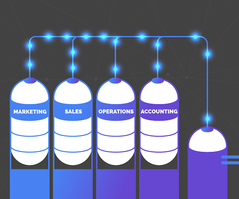 “Data silos” instead of comprehensive, unified, timely business insight: When this happens, the reports that executives see won’t paint an accurate, reliable picture. The right insight is vital for your business's success.  Reactive vs. proactive: Is your IT frequently in “fire-drill mode” and reacting to requests? Or are they proactively driving the business and providing a competitive advantage? You need a change catalyst to assess and transform your IT organization from a laggard to a leader for your company.  Do you have the right technology resources? Do you really need more IT employees, or do you need people with different skills, improved leadership, a better structure, and/or other improvements to your IT organization?  Planning for the future: Companies are in a Digital Transformation race. Do you have the right technology strategy, the right team and the optimal mix of internal and external resources? Is your business' technology on the right course for success? If you observe any of these signs, it's time for an Information Technology review. Xtrii performs comprehensive, cost-effective technology reviews that are conducted by proven technology experts that have helped some of the world's best companies achieve extraordinary success.
As illustrated in the charts below, the list of the world's largest companies by market cap has changed significantly in just the past two decades. Let's analyze the information to see what we can learned and leveraged for a more successful 2020 and beyond. In the following graph, it's interesting to note that only 1 of the top 5 from 2001 is still in the top 5. If you go back to 1955, the top 10 list includes General Motors, US Steel, Chrysler, Amoco, CBS, Goodyear, Firestone... and NONE of the these companies make even the top 20 list today. For 2019, let's expand the list to show the top 10, as of June 2019. Note, the order of the top 3 has frequently changed this year with their market cap values being so close in value. In just the past 3 years, the market values of Microsoft and Amazon have MORE THAN DOUBLED in value.... Wow!
We live in a rapidly changing world, and market-leaders fully leverage change, technology and new opportunities. THE REASONS FOR FAILURE:
Now let's look at the companies that are no longer on the list, and what causes companies to decline. Why do once thriving companies fall from their market position? 1. The Status Quo: Company leaders get too comfortable with the status quo. Too often company leaders state "this is the way we have always done it at this company". Well, that may be, but eventually someone with a more progressive view will change it. For example, Kodak failed to transform their business to digital in a timely manner, Kodak's market dominance in camera film lulled them into ignoring the market shift. By the time they finally acted, their competitors had captured the new digital market and Kodak was no longer a top contender in the new digital camera/film market. 2. Narrow Perspective: Company leaders often rely on just their fellow company leaders and people in their same market for guidance. While it is comfortable to talk with people that think like you and have the same perspective as you, it is also a risk. You need to a broader view to consider all the factors and fresh new options. Business leaders should engage experts from outside their comfort zone to get a broader view and progressive ideas. If you don't, a competitor will. 3. Failure to rapidly change: Once you determine your plan of action, it must be executed in a timely manner. Often companies talk about change and progressive ideas, but fail to fully execute. Do you have the right "Change Catalysts" on your team? 4. Technology missteps: Technology can be a competitive advantage (look at how Amazon has leveraged it to dominate the retail industry). But Technology can also be a huge risk and have a devastating impact when a company makes critical missteps. Too often companies fail to engage the right technology leadership experts to ensure their technology plans and execution are sound. Particularly in small and mid-market companies, business executives often rely on inexperienced, under-qualified, internal technology guidance, instead of engaging the right, proven technology expert. ASK THE RIGHT QUESTIONS Whether you are a market-leading, multi-billion dollar company or a small company, these business principles apply. Currently, market changes and Digital Transformation are reshaping every industry. Your leadership team should be asking:
Engage the right thought leaders, technology experts and change catalysts to help you optimally craft your company's future. Great companies are driven by great business leaders. That leadership expertise must also extend to the key operations areas of the company, including the company's Information Technology. Technology can provide tremendous value and a competitive advantage when executed effectively, but it can also be a huge risk and a very costly mistake when there are missteps. It's imperative that a company has the right, seasoned technology leadership expertise engaged to ensure they are receiving sound technology guidance, pursuing the right technology strategy, executing the proper course of action. Don't be misledToo often, companies do recognize the need for sound technology guidance and leadership, but unfortunately they engage the wrong technology resource. Misled, scenario 1: A technical support company that provides basic PC support/repairs, software coding or other basic tech resources for your company, and falsely claims that could ALSO provide a "Technology Leader or vCIO" for your company, and sends you a woefully, unqualified techie for the role. While this person maybe knowledgeable about PC repairs or coding an app, they are NOT the right expert to help you craft the optimal IT Strategy and chart the right plan of action for your business. You wouldn't engage an Accounts Payable clerk to be your CFO, so don't accept an inexperienced techie for your CIO role. Solution: Check their resume/bio. If they don't have multiple experiences as a successful Chief Information Officer, and track record of excellent results, they aren't the right expert. Insist on a proven expert with extensive, hands-on CIO experience. Misled, scenario 2: A prominent national consulting firm sends out a Partner for the sales pitch, but then sends an inexperienced "consultant" with little to no real-world experience to do the actual work. Solution: Your business doesn't need a rookie consultant with the mega-firm's generic theories, you need a proven technology leadership expert with hands-on technology strategy experience to carefully tailor the right technology plans for your specific business needs. Check the resume/bio of the professional that will be onsite working with your company, and insist on the right expertise. For credible advise and the optimal results, you should expect your technology expert to have credible, hands-on experience themselves. "The only source of real knowledge is experience" |
| Exec Tech | Hello, thank you for joining us today on Exec Tech, where we discuss the most pressing technology topics that executives are facing today. I'm here with Mark Johnson, Chief Executive at Xtrii, and today we are discussing what business leaders can do when they have an under-performing technology organization, or their company has technology issues that need to be addressed. Mark, what should a business leader do when they feel like their technology is not on the right track, or not up to their expecatations? |
| Mark Johnson | The first step is to determine where the real issues lie, and the specific areas that need to be addressed. You need the right diagnosis, and you need it in a timely manner. Typically, we start the process with our Xtrii Rapid Review of the technology function within the company. |
| Exec Tech | Tell us more about Xtrii's Technology Rapid Review... |
| Exec Tech | Are there some common missteps that you see companies make when they have technology issues? |
| Mark Johnson | Yes, one of the most common missteps is to just fire the CIO or head of IT. They swap out the technology leader, but the underlying issues still remain. Again, we first recommend gathering a clear understanding of the big picture and the key issues. If the technology leadership is one of the issues, then we'll address it along with the other factors as part of a well-thought out "Strategic Transformation" of the company's technology. |
| Exec Tech | Yes, that definitely would be a much better approach. How can companies find out more information about the Xtrii Technology Review? |
| Mark Johnson | Call Xtrii at 512-537-3757, or visit us at Xtrii.com. We'll connect them with the right, seasoned technology advisor that is the best fit for their company. Part of the success is building a great relationship and really getting to know our clients and their objectives. And for new customers, we will waive the initial consultation fees.... it's a no risk, no obligation approach for a company to learn how they can rapidly improve their Information Technology. |
| Exec Tech | That's great a great way for them to get to know you and easy way to get the improvement process started. Thank you for tuning in today. On the next episode, we'll be discussing some new options for how companies can hire the best technology leaders for a significant cost savings. We'll see you again soon on Exec Tech. |

Because YOU and your sensitive information that they are collecting in the background are their real product and source of revenue.

Because you agreed to their Privacy Policy when you installed their app on your phone. The reality is that most people don’t read the fine details hidden in the app’s Privacy Policy. The company states in their app’s Privacy Policy that they have the right to do so, and you consent (often unknowingly) to allowing it by installing their app.

It is consuming your battery by continuously searching your smartphone for new information and uploading your information to that company’s servers. Once they make a copy of your contacts, messages, emails, photos, and other sensitive information, they sell it to others for lots of money.
If you want to better protect your privacy and greatly improve your smartphone’s battery, don’t install those free apps. But, if you still want to access those sites, here is a much better way:

Yes, it’s that easy… instead of downloading the Facebook app (or other apps), just go directly to their website and logon through your phone’s browser. The app contains their most invasive tools that secretly scan and collect your information. By using your browser instead of their app, you have removed the app’s collection tools and greatly reduced the information they can collect.
Most smartphone browsers, including Safari (iPhone) and Chrome (Android), have an option to “Add to Home Screen” in their menu. Just select that option, and it will add that website to your home screen. It's just as quick and convenient, and the icon looks just like the app’s icon.
Instead of opening the app, it accesses the information through your phone browser, It’s just as convenient and a similar viewing experience, while saving your privacy and phone battery by using this browser approach instead of the app. Most people see a significant (10% or more) savings in their phone battery level each day, by making this simple change.
With this insight and these few adjustments to the way you access information, you can help keep your personal information private, and greatly improve the battery life of your phone.
Eventually the list becomes overwhelming, which causes some people to start using very risky methods to keep up with all the passwords...they write them on a sticky note, write they in a paper notebook, or they use the same password for every service. But this is a recipe for identity theft, lose of your very sensitive personal information, and/or other significant personal impact.
We often see services hacked that we commonly use such as Yahoo, LinkedIn, Home Depot, Zappos, Uber and many others. When they hack those companies/services, they typically steal your username and password, and if you use the same password for every account, the hacker can now access and steal from all of your accounts. I encourage you to create individual passwords for every account. So, you need a better way of securing and keeping up with your ever-growing list of passwords, and I recommend you implement a Password Manager.
A Password Manager keeps your passwords secure by storing them in an app that is protected by military-grade encryption. Password Managers come in several flavors. You can purchase an Password Manager application that you install on your device (your smartphone and/or PC), and with that one-time purchase you own the Password Manager. Or you can pay a monthly or annual subscription fee that provides an application that you install or access through a secure website. A Password Manager will make your information more secure, give you piece of mind, and make your life a lot easier too!
Here are three recommendations for a Password Manager:
- LastPass, www.lastpass.com, is one of the most popular and most recommended by trade journals. Price: Free for basic service, $12 subscription fee per year for premium.
- 1Password, 1password.com, has been the leading password manager for apple products and it now works well on PC and android.
Price: $3 per month subscription fee on unlimited devices, $5 per month subscription fee for a family plan. - eWallet, www.iliumsoft.com/ewallet, is my recommendation for a one-time purchase for individual devices.
Price: $9.99 one time purchase for your smart phone app, small additional fee to add it to other devices.
For this best of 2017 review, I will cover the most requested personal technologies in a series of weekly articles. This week’s article will cover the best:
5. To-do list App
6. Printer (personal/small business)
7. Home Security Cameras
8. Data storage (Cloud service, personal NAS… the best way to store your data)
The Best To-Do-List App: Todoist
I have tried many different to-do-list apps, and while each can provide a basic list, the easy of use, intuitive user interface, ability to reliably sync your to-do-list between all your devices, and integrations with other apps (such as Amazon Echo/Alexa) sets Todoist apart from the others. The base version of Todoist is FREE, and even the base version will satisfy most user's to-do-list needs.
The Best Printer: Epson WF-4720
The best all-in-one printer is the Epson WF-4720. This one device provides a great color scanner with a high-capacity document feeder, a color copier, a color printer, and a fax, and it's the fastest printer we have ever tested. Typically ink jet printers are very slow, but Epson upgraded this model with their new print technology, and it is shockingly FAST. Who wants to wait on your pages to print?.... nobody. So, when you buy a printer, purchase one that has the right functionality, great print quality AND great print speed.
The Best Home Security Camera: Nest Cam
Nest offers the ability to capture the video in the Nest Cloud, which provides you convenient way to access your camera videos from anywhere, and the security of having a copy of the videos at a secure, offsite location....if a thief steals your valuables and your cameras, you will still have a copy of the videos to provide to the police. The Nest Cam can also be configured to send an alert to your phone whenever a person is detected in a designated area (such as your front door or back door), which is another great security feature. And once you receive the alert, the Nest App allows you to have two-way conversation with the person through the microphone and speaker that is built into the Nest Cam. Overall great features and the Nest ecosystem make the Nest Cam the best.
The Best Data Storage: Dropbox
One of the most frequently asked technology question is "What is the best way to store all my files/data"? Over the years, cloud data storage options have changed the way we store and share our files. One of the first providers of cloud data storage was Dropbox, and now even many years later, they are still the best.
This recommendation is for individual use, not a large business/enterprise. The needs are different for a large business/enterprise, and that recommendation will be covered in another article. Today, there are many options for storing your data, with an ever-growing list of cloud data storage providers and new "private-cloud"/NAS options.
Let's review the cloud storage options. Google Drive continues to improve and offer new interesting features. Microsoft OneDrive is becoming more compelling with their bundling of 1TB of OneDrive storage with an Office365 plan. I have used all of them extensively, and frequently compare notes with my fellow technology professionals, and the one that everyone keeps coming back to is Dropbox. It's convenient, reliable, and has the best user-interface.
Private Cloud/NAS: Some people ask about setting up their own "private cloud", by purchasing and configuring a NAS (Network Attached Storage). While the privacy of your own NAS may sound compelling, when you consider the cost and hassles, your private cloud typically isn't worth it. We recently setup our own NAS for an evaluation. We spent thousands of dollars to purchase all the components, many hours configuring it, and it will continue to require maintenance. For the total cost of this NAS, we could have purchased 10+ years of a Dropbox subscription. And the NAS will most likely require even more costly hardware replacements within the next 5 years (or sooner). With your own NAS, you will still need an offsite, backup copy of your data, which will is another additional cost. Overall the cost comparison and hassles of having your own private cloud hardware just doesn't make sense.
Please note: I recommend that you do NOT keep confidential and/or sensitive data in any Cloud service. Instead, keep confidential and highly sensitive data on your own, private encrypted drive and back it up frequently with another, encrypted USB drive(s). Once the backup is complete, keep the backup drive disconnected from your PC and in a separate, secure location.
A case can be made for each of the options, but overall I recommend Dropbox for your primary data storage. With pricing continuing to change and new features being added, this recommendation may eventually change. We will continue to test all of them and monitor the progress, so stay tuned.
To see the other best of 2017 technologies (categories 1-4), click here.
- Smartphone
- Smartwatch
- Laptop
- Home Technology
Author
Mark Johnson is the Chief Executive Officer at Xtrii. He is a 10x CIO, global technology advisor and business leader. He has received global awards and recognition for excellence in technology and innovation.
For more than 30 years he has helped some of the world's best organizations optimize their technology and achieve extraordinary success.
For more details visit his LinkedIn profile or follow him on Twitter @johnsonme.
Archives
April 2020
March 2020
December 2019
November 2019
October 2019
June 2019
March 2019
February 2019
January 2019
August 2018
July 2018
June 2018
April 2018
February 2018
January 2018
December 2017
December 2014
November 2014
June 2014
April 2014
March 2014
February 2014
Categories
All
CyberSecurity
Excellence
Healthcare
Improving Performance
Leadership
Presentations
Videos




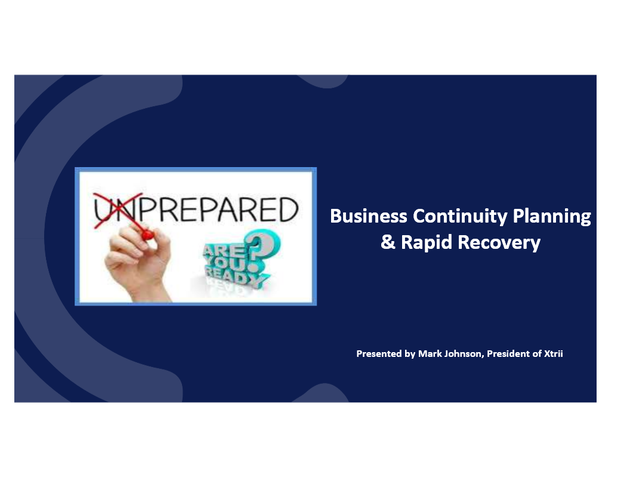




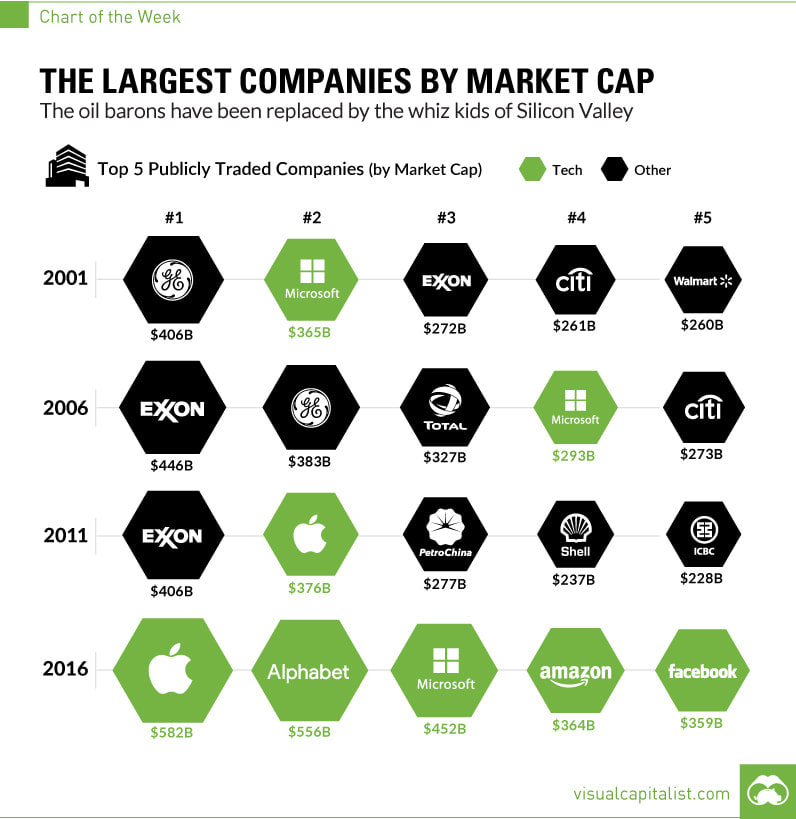
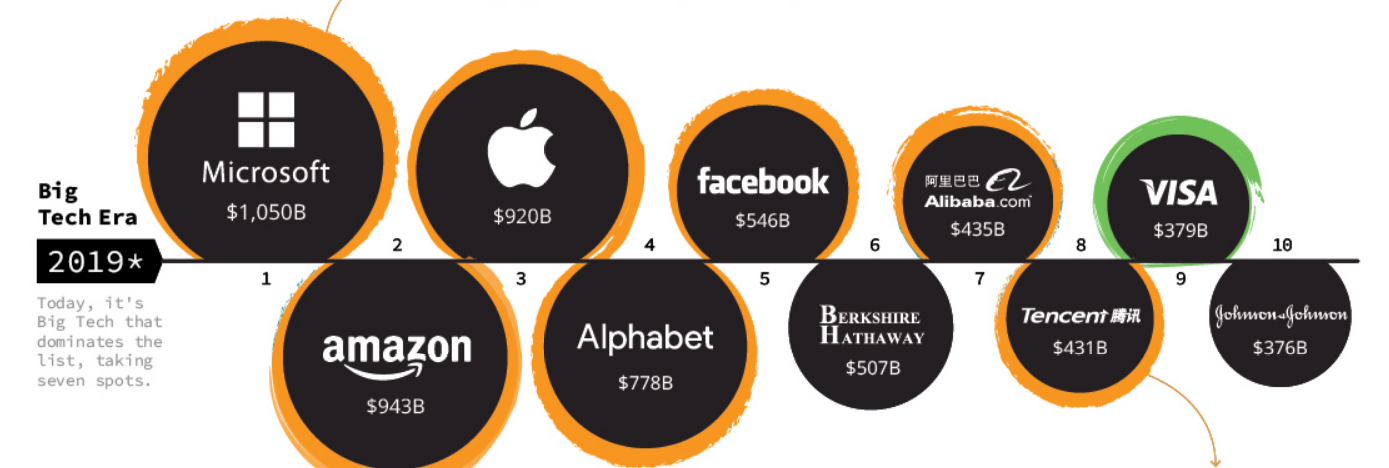


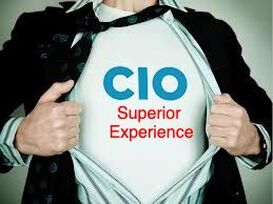






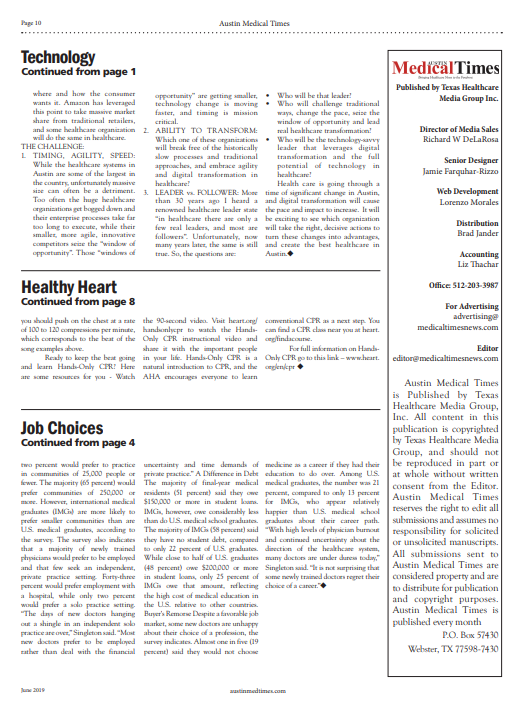










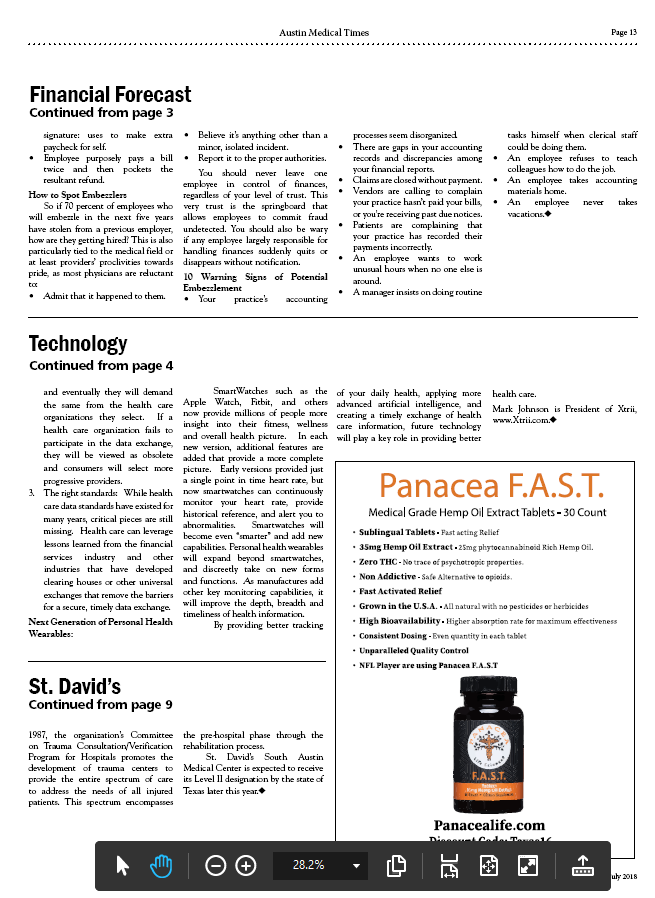

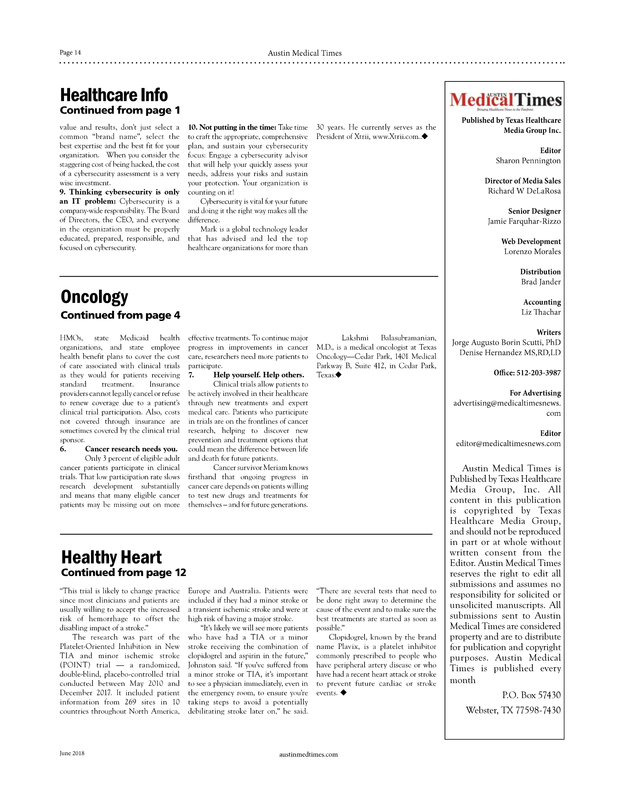
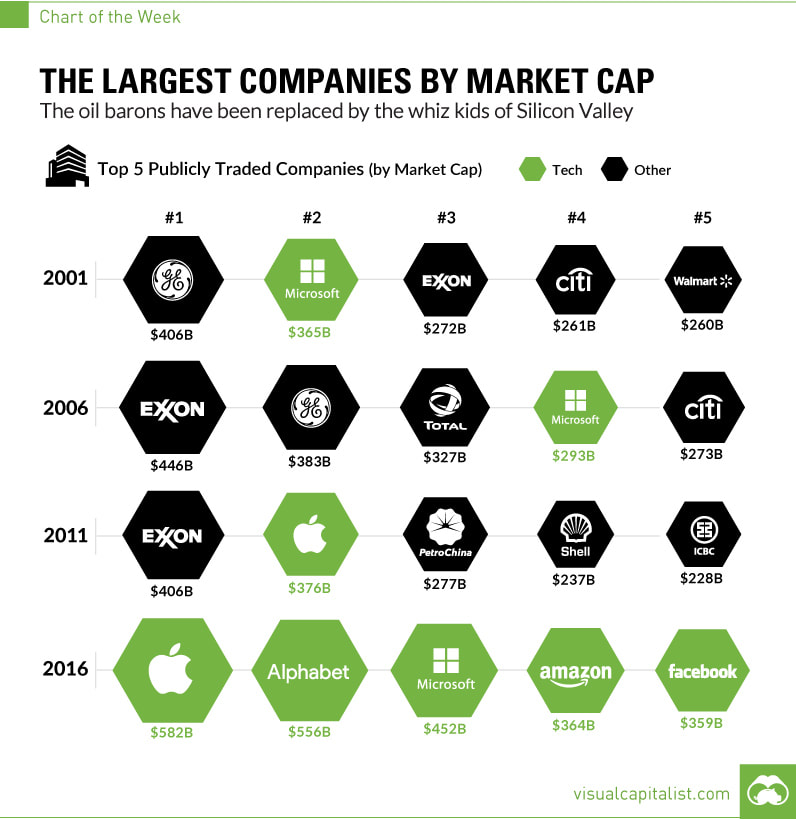
















 RSS Feed
RSS Feed